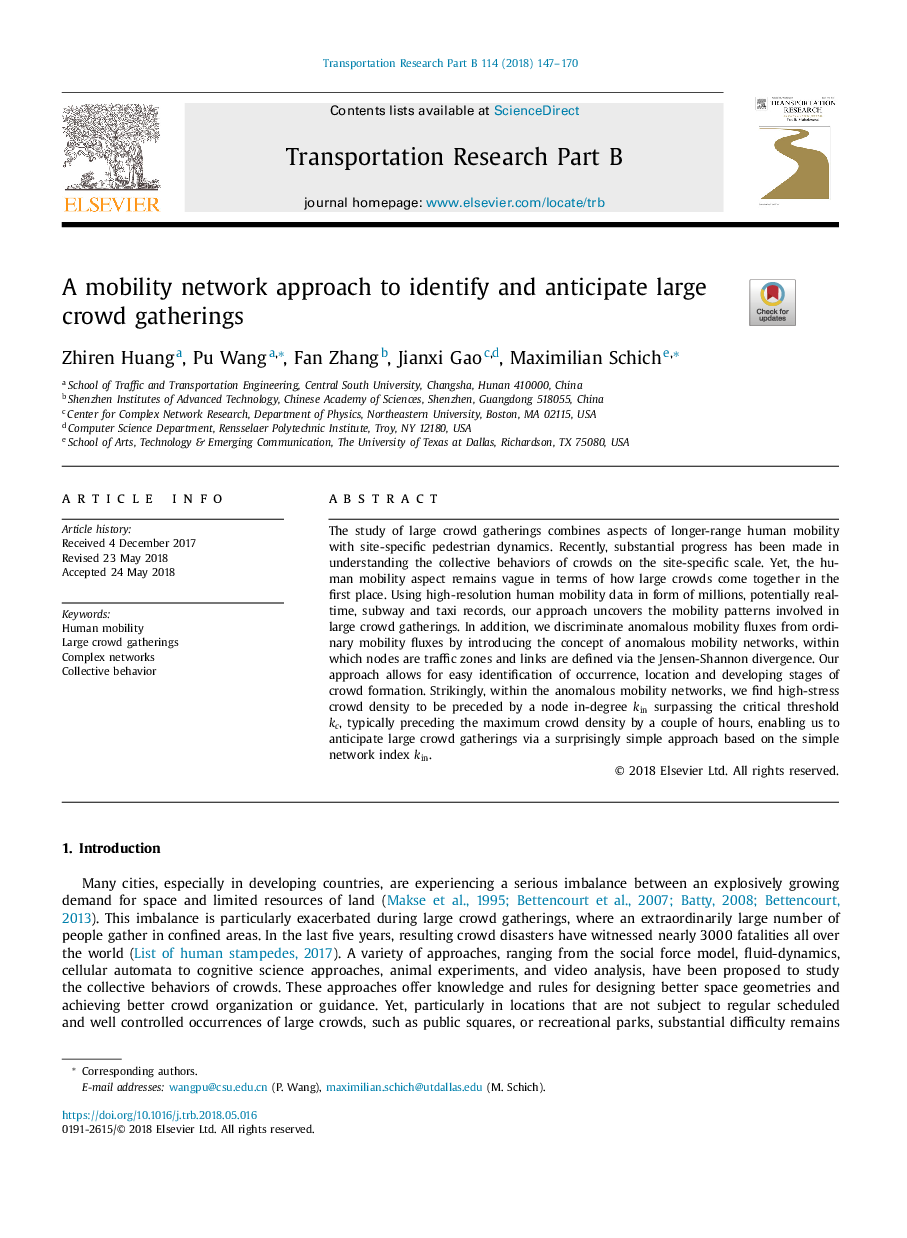| Article ID | Journal | Published Year | Pages | File Type |
|---|---|---|---|---|
| 7538927 | Transportation Research Part B: Methodological | 2018 | 24 Pages |
Abstract
The study of large crowd gatherings combines aspects of longer-range human mobility with site-specific pedestrian dynamics. Recently, substantial progress has been made in understanding the collective behaviors of crowds on the site-specific scale. Yet, the human mobility aspect remains vague in terms of how large crowds come together in the first place. Using high-resolution human mobility data in form of millions, potentially real-time, subway and taxi records, our approach uncovers the mobility patterns involved in large crowd gatherings. In addition, we discriminate anomalous mobility fluxes from ordinary mobility fluxes by introducing the concept of anomalous mobility networks, within which nodes are traffic zones and links are defined via the Jensen-Shannon divergence. Our approach allows for easy identification of occurrence, location and developing stages of crowd formation. Strikingly, within the anomalous mobility networks, we find high-stress crowd density to be preceded by a node in-degree kin surpassing the critical threshold kc, typically preceding the maximum crowd density by a couple of hours, enabling us to anticipate large crowd gatherings via a surprisingly simple approach based on the simple network index kin.
Related Topics
Social Sciences and Humanities
Decision Sciences
Management Science and Operations Research
Authors
Zhiren Huang, Pu Wang, Fan Zhang, Jianxi Gao, Maximilian Schich,
